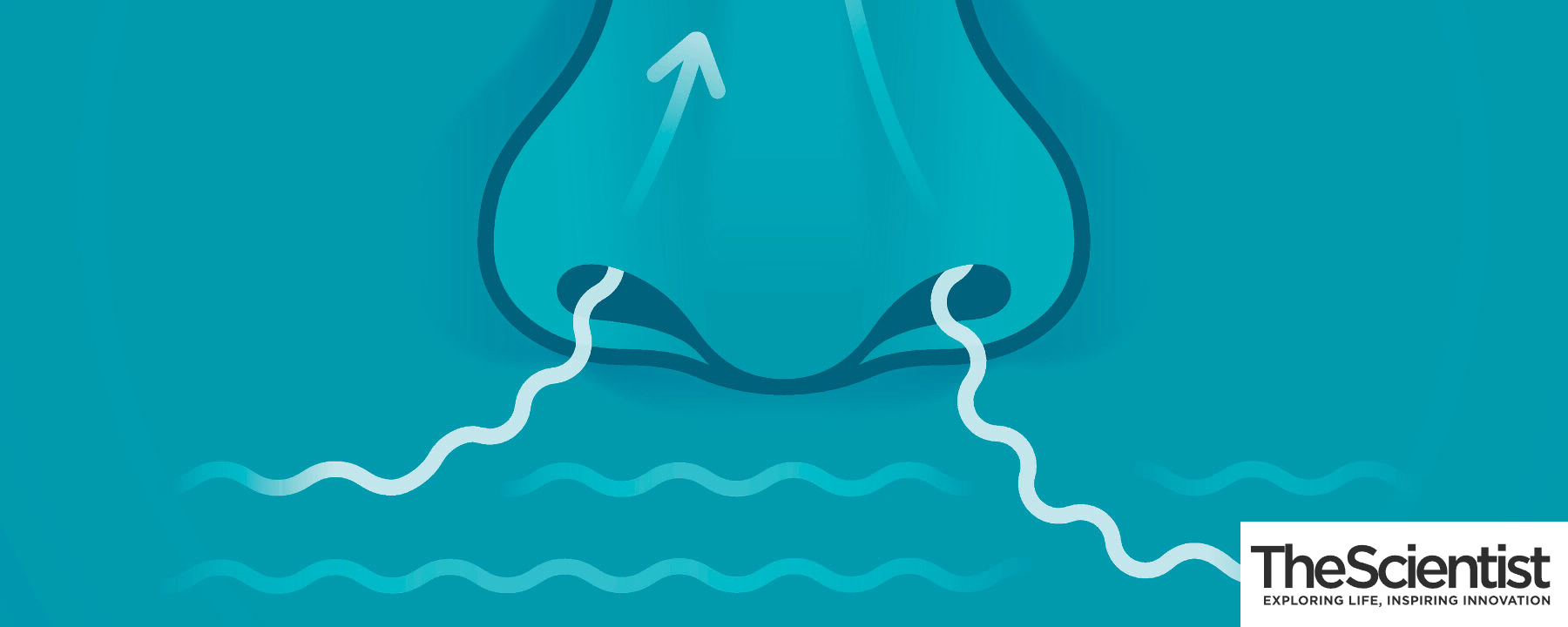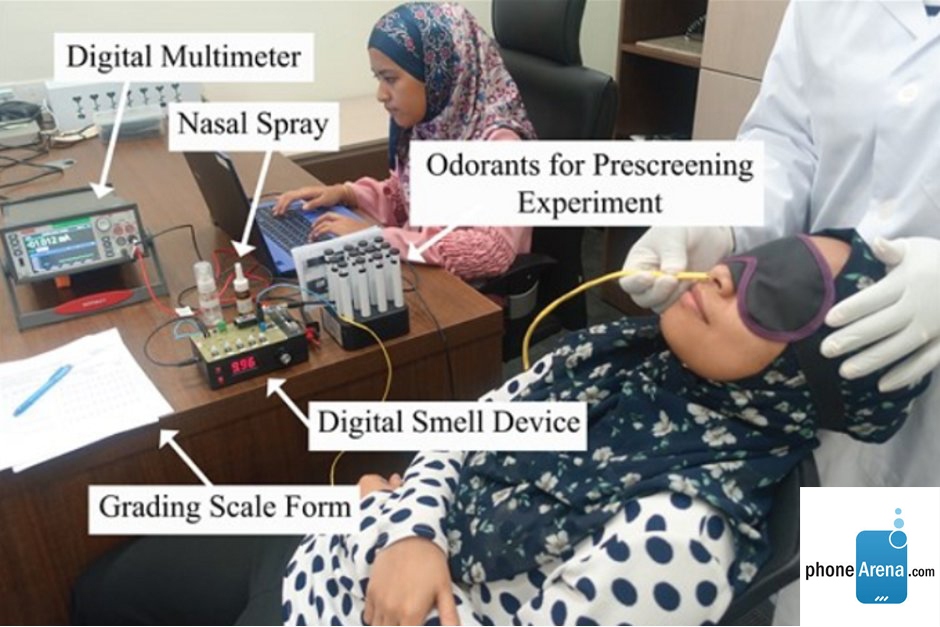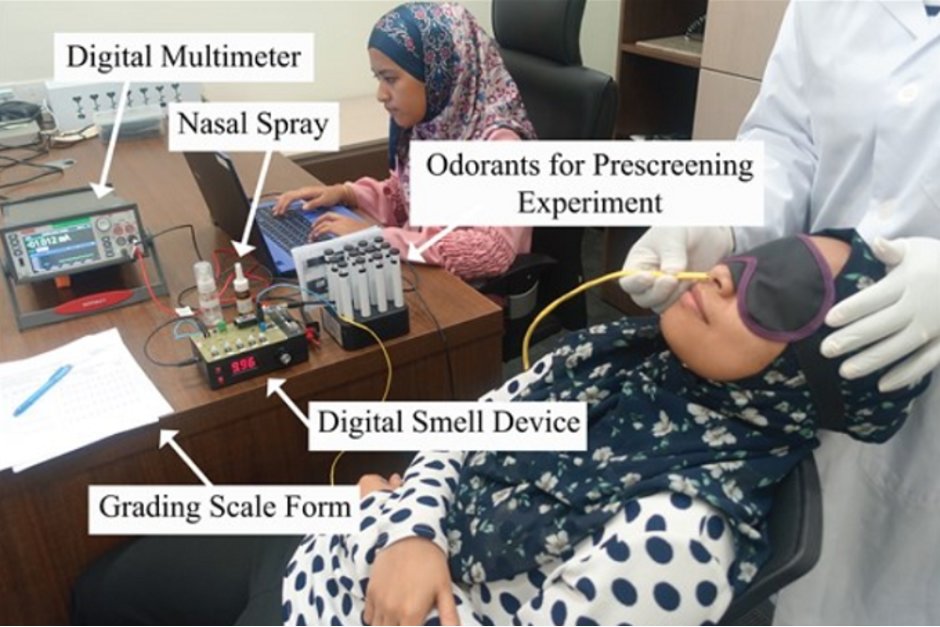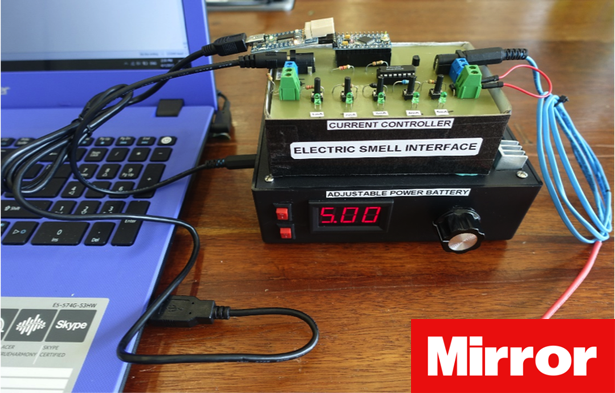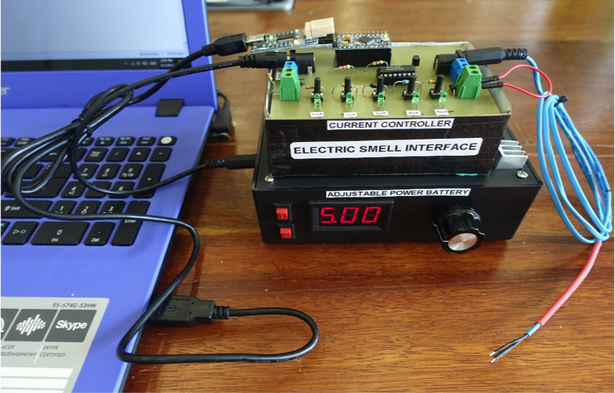
‘Digital smell’ technology could mean you can send smells via online chats, scientists claim | Daily Mail Online
By Chris Mahon, Wednesday, 28 November 2018 – 1:53PM
Of all the useless projects undertaken by humanity, few have been more difficult, futile, and unpleasant than artificially creating smell, either through electrical impulses or by pumping in smells directly into a room (like the ill-fated Smell-O-Vision). Though smells can trigger emotions and even memories, nobody is really clamoring for a piece of technology that lets you smell someone you’re video-chatting with or sample a catalog of virtual smells (unless it’s one of those fancy air fresheners). Nevertheless, a team of researchers in Malaysia is forging ahead with digital smell technology, and they claim to have made some progress.
During the experiments, 31 participants had an electrodes inserted in their nostrils, which stimulated the receptors in the nose that send signals to the brain to create a sensation of smell. According to the Imagineering Institute, which conducted the study, the researchers were able to evoke 10 different artificial scents, though they weren’t able to control which one the participants smelled.
According to Adrian Cheok, one of the researchers associated with the study: “It’s not just about the smell. It is part of a whole, integrated virtual reality or augmented reality. So, for example, you could have a virtual dinner with your friend through the internet. You can see them in 3D and also share a glass of wine together.”
However, some scientists have doubted the findings of the study. One of them is Charles Spence, of the University of Oxford, who told Mach: “Any everyday smell will probably activate tens or hundreds of receptors. If you have only got one electrode in the nose, no matter what frequency rate or intensity (of electrical current you use) you are not going to be able to stimulate enough receptors to deliver a (perception).”
Joel Mainland, of Monell Chemical Senses Center in the United States, also pointed out that people may believe they can smell a faint odor when they’re told they should be smelling one. According to Mainland, the Malaysia study doesn’t adequately account for this issue.
Either way, we’re not holding our breath (or noses) for the day when you can email someone the scent of a sandwich.
Flower Delivery with Blossoming Elegance

Flowers are more than simply a transaction. It’s an opportunity to express emotions and celebrate special occasions and lift spirits. Flower delivery is more than the mere logistics of it; it’s about making arrangements that exude class and class. In this post, we delves into the intricate process of sending flowers with blooming beauty, from selecting the perfect flowers to making sure that the presentation is perfect.
The Flower Delivery Introduction
Flowers have been long admired because of their ability to express sentiments and emotions. It doesn’t matter if it’s to express the sentiments of sympathy, love or happiness flowers can be a universal language that is beyond words. Therefore, the act of delivery of flowers has a significant significance both in professional and personal situations. From weddings to birthdays, funerals to graduations, flowers serve as a key element in the celebration of the important events in life.
Elegance is the most important aspect of a successful flower delivery in Lahore. It’s not about the number or the variety of flowers; it’s about a beautiful arrangement that displays the taste, style and a keen eye for the smallest of details. An arrangement that’s elegantly designed is able to engage all the senses while leaving an unforgettable impression on the person who receives it.
Selecting the Best Flowers
The first step to deliver elegant flowers is choosing the perfect flowers. Flowers have different meanings, therefore it is important to think about the occasion as well as the recipient’s preferences. Roses, for instance, are associated with romance and love, which makes the perfect choice for anniversaries as well as Valentine’s Day. However, the lily symbolises the purity of innocence which makes the perfect choice for weddings as well as ceremonies of religious significance.
Knowing the language of flowers lets you design arrangements that speak to the person receiving it at an emotional level. Take into consideration the color, scent and meaning of every flower to ensure that your arrangement conveys the message you want to send.
the art of Flower Arrangement
After you’ve selected the perfect flowers, now it’s time for you to place them in a manner that oozes elegance and class. The art of flower arrangement requires more than simply placing the flowers into a vase. the art of floral arrangement requires knowledge, imagination and an eye for style. The first step is to choose the focal point of your arrangement, like an impressive, striking flower or a striking accessory.
Then, think about the principles of proportion, balance, and harmony while arranging your bouquet. Try experimenting with various textures, colors and heights to add visual interest and depth. Don’t be uneasy mixing and matching various types of foliage and flowers to enhance your arrangement.
The role in Elegance for Flower Delivery
Elegance transforms a basic arrangement into a masterpiece. It’s the attention to details and the precise arrangement, and the overall design that set the most elegant bouquet above the rest. If done correctly elegantness enhances the user’s experience, creating feelings of appreciation, admiration and joy.
No matter if it’s an individual stem rose or an extravagant centerpiece, each flower arrangement can be an exquisite work of art. By selecting only the best flowers and placing them in a thoughtful manner it is possible to create stunning moments that will be remembered and treasured.
The Power of Scent: How to Use Smells in Your Marketing Strategy
As businesses continue to innovate and look for new ways to attract customers, one approach that is gaining attention is the use of scent marketing. Scent marketing is the process of using smells to promote a brand, product, or service, and it can be an incredibly effective tool in your marketing arsenal.
Smells are powerful triggers that can evoke emotions, memories, and even influence behavior. When you walk into a bakery and smell fresh bread, for example, it can make you feel hungry and entice you to buy a loaf. Similarly, the scent of pine needles can evoke memories of Christmas, and the smell of freshly cut grass can make you feel calm and relaxed.
Here are some tips on how to incorporate scent marketing into your business strategy:
Identify your brand’s scent: Every brand has a unique personality, and your scent should reflect that personality. For example, a gym might use the scent of peppermint to promote energy and focus, while a luxury hotel might use lavender to promote relaxation and comfort.
Use scents strategically: Scents can be used to create a mood, enhance the customer experience, or even mask unpleasant odors. For example, a car dealership might use the scent of leather to create a luxurious atmosphere, while a hospital might use the scent of eucalyptus to mask the smell of antiseptics.
Experiment with different scents: Just like any other marketing strategy, scent marketing requires experimentation and testing. Try out different scents to see which ones resonate with your customers and help achieve your goals.
Be considerate: While scents can be powerful marketing tools, it’s important to be considerate of others. Some people may have allergies or sensitivities to certain smells, so it’s important to use scents in moderation and avoid overpowering customers click this link here for more information.
Incorporating scent marketing into your strategy can be a unique and effective way to stand out in a crowded market. By identifying your brand’s scent, using scents strategically, experimenting with different scents, and being considerate, you can create a memorable and engaging experience for your customers.






